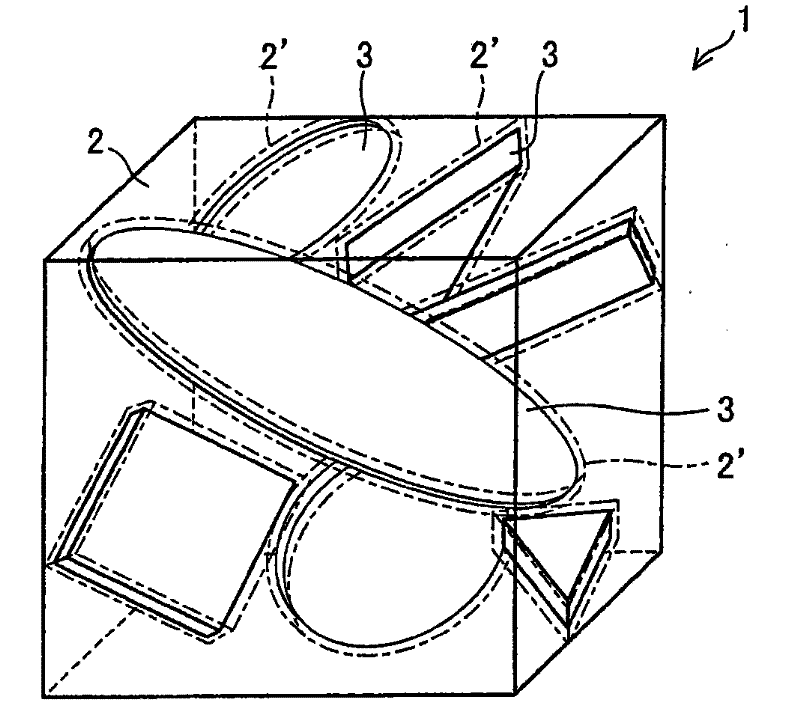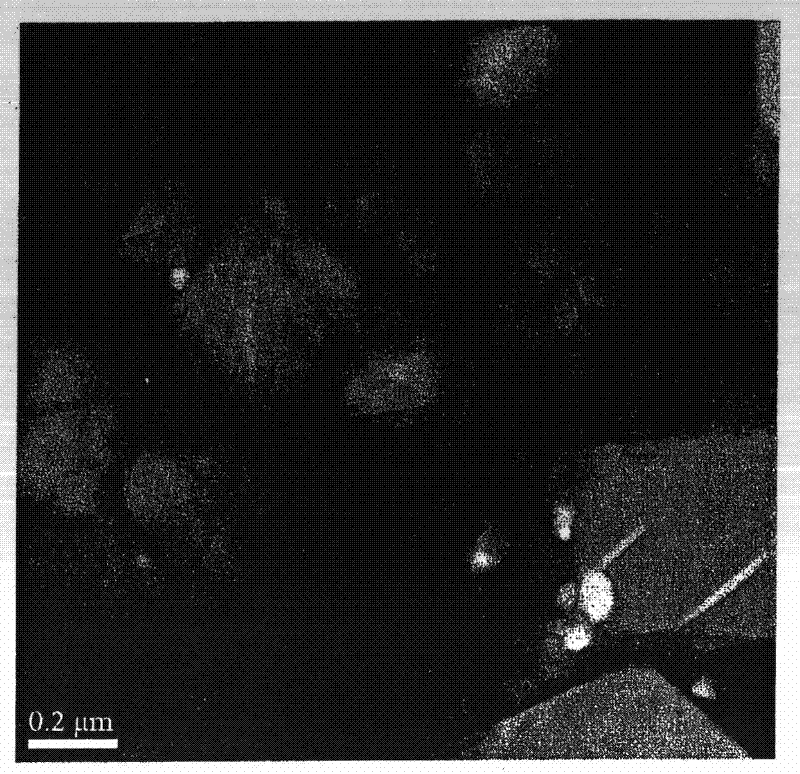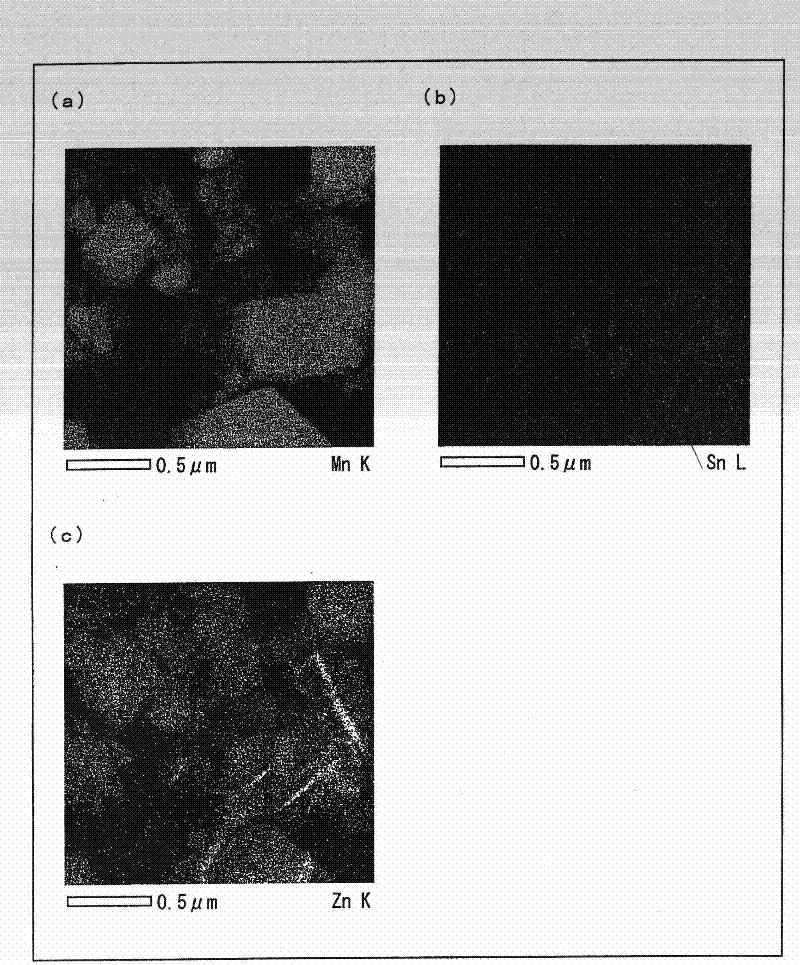Anode active material and nonaqueous secondary battery including anode having the anode active material
A positive active material, secondary battery technology, applied in secondary batteries, non-aqueous electrolyte batteries, battery electrodes, etc., can solve problems such as battery capacity reduction
- Summary
- Abstract
- Description
- Claims
- Application Information
AI Technical Summary
Problems solved by technology
Method used
Image
Examples
Embodiment 1
[0181] Zinc oxide was used as the zinc source material, and tin(IV) oxide was used as the tin source material. These materials were weighed so that the molar ratio of zinc to tin was 2:1, and then mixed in an automatic mortar for 5 hours. Furthermore, a calcined product was obtained by firing at 1000° C. for 12 hours under the conditions of an air atmosphere. After calcination, the obtained calcined product was pulverized and mixed with an automatic mortar for 5 hours to prepare a spinel compound.
[0182] Lithium carbonate was used as the lithium source material constituting the lithium-containing oxide, and electrolytic manganese dioxide was used as the manganese source material, and these materials were weighed so that the molar ratio of lithium to manganese became 1:2. Then, the spinel compound and the main crystal phase are weighed so that x=0.05 in the general formula A. Lithium carbonate, electrolytic manganese dioxide, and a spinel compound were mixed in an automatic ...
Embodiment 2
[0191] Synthesis was performed in the same manner as in Example 1, except that the mixing rate x of the spinel compound in the general formula A was changed from x=0.05 to x=0.02. A bipolar battery was produced in the same manner as in Example 1, and a charge-discharge test was performed. The results are shown in Tables 1 and 2.
[0192] In addition, a sample for STEM-EDX analysis was obtained by the same method as in Example 1. Then, shoot with the same method as embodiment 1, obtain the photogram of HAADF-STEM image ( Figure 6 , Figure 8 (a)), EDX-element spectrum photographing ( Figure 7 ) and electron ray diffraction pattern ( Figure 8 (b).
[0193] Depend on Figure 6 , 7 It was confirmed that, similarly to Example 1, the spinel-type compound (secondary crystal phase) in the main crystal phase of the positive electrode active material was formed in layers. and, Figure 8 In the HAADF-STEM image of (a), 8, 10, 11, and 12 represent the main crystal phase, and 9 ...
Embodiment 3
[0195] Synthesis was performed in the same manner as in Example 1, except that the mixing rate x of the spinel-type compound in the general formula A was changed from x=0.05 to x=0.10. A bipolar battery was produced in the same manner as in Example 1, and a charge-discharge test was performed. The results are shown in Tables 1 and 2.
[0196] In addition, a sample for STEM-EDX analysis was obtained by the same method as in Example 1. Then, shoot with the same method as embodiment 1, obtain the photogram of HAADF-STEM image ( Figure 9 , Figure 11 ), EDX-element spectrum photographing ( Figure 10 ), electron ray diffraction pattern ( Figure 12 ).
[0197] Depend on Figure 9 , 10 It was confirmed that, similarly to Example 1, the spinel-type compound (secondary crystal phase) in the main crystal phase of the positive electrode active material was formed in layers. in addition, Figure 11 Among them, 1, 2, 5, 6, and 7 represent the main crystal phase, and 3 and 4 repr...
PUM
| Property | Measurement | Unit |
|---|---|---|
| thickness | aaaaa | aaaaa |
| thickness | aaaaa | aaaaa |
| thickness | aaaaa | aaaaa |
Abstract
Description
Claims
Application Information
 Login to View More
Login to View More - R&D
- Intellectual Property
- Life Sciences
- Materials
- Tech Scout
- Unparalleled Data Quality
- Higher Quality Content
- 60% Fewer Hallucinations
Browse by: Latest US Patents, China's latest patents, Technical Efficacy Thesaurus, Application Domain, Technology Topic, Popular Technical Reports.
© 2025 PatSnap. All rights reserved.Legal|Privacy policy|Modern Slavery Act Transparency Statement|Sitemap|About US| Contact US: help@patsnap.com



